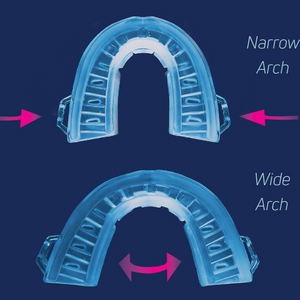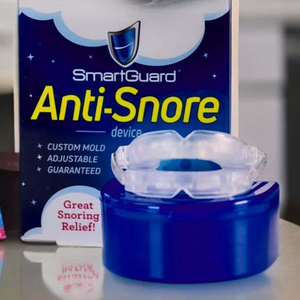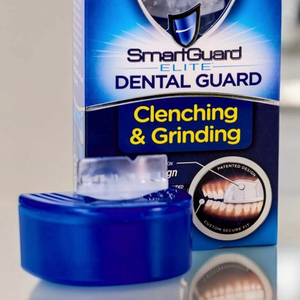Aug 26, 2025
CAN YOU INJURE SOMEONE IN YOUR SLEEP?
Sleep is a necessary part of life, health, and is something we crave; but most of us are unaware of one very bizarre fact of sleep: body movements while dreaming. This article presents the current research on our ability to move and enact our dreams to the possible harm of ourselves or other people.
CAN YOU MOVE OR EVEN SNEEZE WHILE DREAMING?
No, during REM (Rapid Eye Movement), the dreaming phase of sleep, your brainstem sends inhibitory signals to motor neurons, inducing muscle atonia. Motor neurons are the nerves that trigger muscle movements, and muscle atonia (temporary paralysis) prevents large muscle movements, which is why you can’t walk, talk, or sneeze until you shift out of REM sleep.
During REM, most of your skeletal muscles enter a state of near-complete paralysis so that you don’t physically act out your dreams. Only your diaphragm—the breathing muscle—and eye muscles remain active, effectively blocking any sneeze reflex or punching someone until you wake up or shift into a different stage of sleep.
WHAT IF YOU HAVE (RBD) REM SLEEP BEHAVIOR DISORDER?
Without this protective paralysis, people with REM sleep behavior disorder can injure themselves or others by physically enacting vivid dreams, especially nightmares. REM atonia teaches us how intricately our nervous system balances safety and consciousness. If you’ve ever experienced sleep paralysis or vivid dream enactment, it’s a sign of how powerful—and occasionally fallible—this system can be.
WHAT % OF THE POPULATION HAS RBC?
REM Sleep Behavior Disorder (RBD) is relatively rare but becomes more common with age. Here's a breakdown of its prevalence:
-
0.5% to 1.5% of the general adult population, when confirmed by polysomnography (sleep study)
-
~2% of adults over age 65
-
0.68% prevalence when diagnosed with sleep studies (defined RBD)
-
5.65% prevalence when based on clinical symptoms or questionnaires (probable RBD)
RBD is especially important to monitor because it can be an early sign of neurodegenerative diseases like Parkinson’s or Lewy body dementia. If you're exploring neurological health, possibly because of familial concerns, this is definitely a condition worth understanding more deeply.
WHAT ARE THE SYMPTOMS OF RBD?
- Kicking, punching, flailing arms
- Jumping or falling out of bed
- Running or leaping in response to dream content
-
Self-injury or injury to a bed partner
- Talking or shouting
- Laughing, crying, or emotional outbursts
-
Swearing or making other expressive noises
- Vivid, often violent or action-packed dreams
- Ability to recall the dream upon waking, especially if awakened during an episode
Symptoms may start gradually or suddenly. Episodes can occur occasionally or multiple times per night. The disorder often worsens over time, especially if linked to neurodegenerative conditions.
WHY RBD MATTERS!
RBD isn’t just disruptive—it can be dangerous. It’s also considered a potential early marker for neurological diseases like Parkinson’s, Lewy body dementia, or multiple system atrophy.
If you're exploring sleep quality or suspect symptoms like these, a sleep study (polysomnography) is the gold standard for diagnosis.
HOW TO TREAT RBD?
Effective treatment for REM Sleep Behavior Disorder (RBD) focuses on two key goals: reducing dream enactment behaviors and preventing injury during sleep. Here's a breakdown of the most evidence-based approaches:
Some medications can help to control RBC. The following are the frontline treatments, though all are considered off-label (not FDA-approved specifically for RBD):
Melatonin
Dose: Typically 3–6 mg at bedtime, sometimes higher
Benefits: Reduces violent behaviors, improves sleep architecture
Considerations: Over-the-counter formulations vary in potency; switching brands may help
Clonazepam
Dose: Usually 0.5–1 mg at bedtime
Benefits: Long-standing use with strong efficacy in suppressing motor activity during REM
Risks: Daytime sedation, cognitive effects, fall risk in older adults
Other options (second-line)
Rivastigmine, pramipexole, or donepezil may be considered in select cases, especially if RBD is linked to neurodegenerative conditions
TREATING UNDERLYING CAUSES
Treating the underlying condition—if present—can improve RBD symptoms. For example, adjusting antidepressants or managing neurodegenerative disease may help.
RBD can be as follows:
Idiopathic (no known cause)
Secondary to conditions like Parkinson’s, Lewy body dementia, narcolepsy, or medication use
SAFETY MEASURES
Because physical injury is a major concern, creating a safe sleep environment is essential:
Remove sharp objects, furniture, or weapons near the bed
Use padded bed rails or place the mattress on the floor
Consider sleeping separately from a bed partner if episodes are frequent or violent
COEXISTING SLEEP DISORDERS
RBD may occur alongside or be mistaken for:
Obstructive Sleep Apnea (OSA)
Episodes of gasping or jerking during apnea events can resemble dream enactment
Treating OSA may reduce RBD-like symptoms in some cases
Narcolepsy
RBD is common in narcolepsy, especially type 1 (with cataplexy)
Both involve abnormal REM sleep regulation, and narcolepsy may include vivid dreams and hallucinations
Parasomnia Overlap Disorder
Combines features of RBD and NREM parasomnias (like sleepwalking or night terrors)
Differentiating between REM and NREM parasomnias requires a sleep study
Medication-Induced RBD
Antidepressants (SSRIs, SNRIs, TCAs) can trigger RBD-like symptoms. Discontinuing the medication may resolve the behaviors
RBD CAN BE AN EARLY WARNING SIGN
RBD is often a prodrome (early warning sign) of neurodegenerative diseases:
Parkinson’s Disease (PD)
50–60% of PD patients have RBD
RBD may precede motor symptoms by years
Lewy Body Dementia (LBD) and Multiple System Atrophy (MSA)
Because dream enactment can resemble movements from other disorders (like sleep apnea or even restless leg syndrome), polysomnography (overnight sleep study) is essential to confirm RBD. It detects REM sleep without atonia, the hallmark of the disorder.







